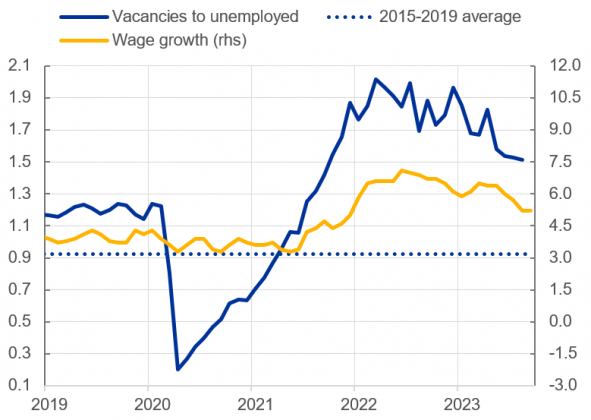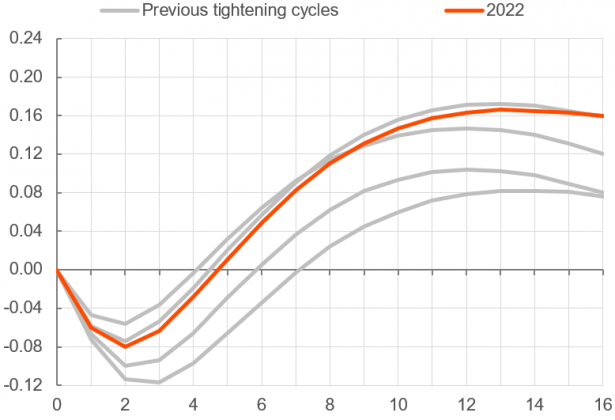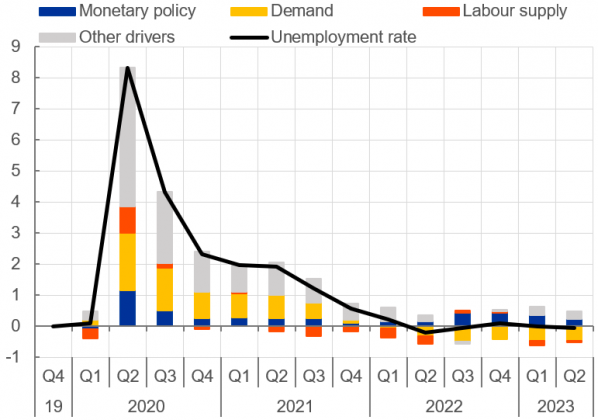References
Arias, J.E., Rubio-Ramírez, J.F., and D.F. Waggoner (2018): “Inference based on structural vector autoregressions identified with sign and zero restrictions: Theory and applications.” Econometrica, 86(2), pp. 685-720.
Bauer, M.D. and E.T. Swanson (2023) “A Reassessment of Monetary Policy Surprises and High-Frequency Identification”. NBER Macroeconomics Annual.
Bergholt, D, F Furlanetto, and E Vaccaro-Grange (2023), “Did monetary policy kill the Phillips curve? Some simple arithmetics”, Working paper series, 2/2023, Norges Bank.
Bräuning, F., Fillat, J.L. and G. Joaquim (2023): “Firms’ Cash Holdings and Monetary Policy Transmission”. Federal Reserve Bank of Boston Current Policy Perspectives, October 12, 2023.
Cohen, E. (2023): “Post Pandemic Labor Shortages Have Limited the Effect of Monetary Policy on the Labor Market”. Kansas City Fed Economic Bulletin, September 22, 2023.
D’Amico, S. and T. King (2023): “Past and Future Effects of the Recent Monetary Policy Tightening”. Chicago Fed Letter, no. 483, September 2023.
McLeay, Michael and Tenreyro, Silvana, (2020), Optimal Inflation and the Identification of the Phillips Curve, NBER Macroeconomics Annual, 34, issue 1, p. 199 – 255.
Minutes of the Federal Open Market Committee June 13–14, 2023. Board of Governors of the Federal Reserve System. https://www.federalreserve.gov/monetarypolicy/files/fomcminutes20230322.pdf.
Primiceri, G.E. (2005): “Time Varying Structural Vector Autoregressions and Monetary Policy”, The Review of Economic Studies, Volume 72, Issue 3, July 2005, Pages 821–852.






